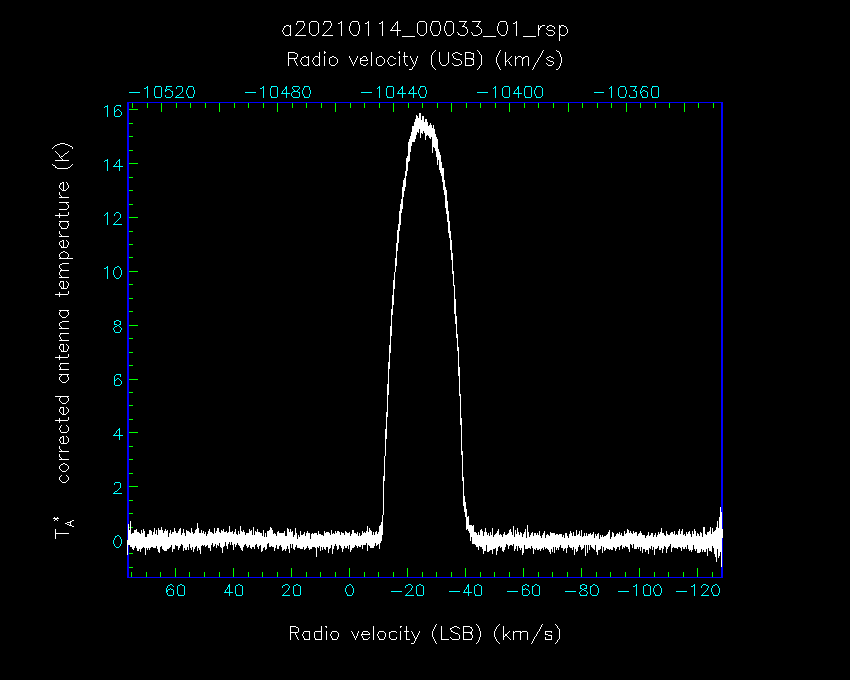Current Status: Commissioning/Shared risk science
`Āweoweo is one of three inserts held within the Nāmakanui instrument. `Āweoweo is a Sideband Separating (2SB) instrument working around the 345GHz range.
The calibration work of `Āweoweo is ongoing, and if one is interested in the calibration information, at this stage it is fair to assume that the information will be similar to HARP’s, which should be adequate for users’ observing planning purpose.
The expected `Āweoweo tunable LO frequency range is currently 282 – 365 GHz, so the observable sky frequency range with ACSIS is 277 – 370 GHz with LO = 5 GHz (LO of 5GHz provides best noise performance). It is also noted that it is difficult to reach certain frequencies (<302GHz) using an IF of 6GHz in 250MHz bandwidth mode (1000MHz observations are unaffected by this issue).
The full bandwidth and resolution configurations available are described on the ACSIS page. `Āweoweo can be used in Stare, Jiggle, and Raster observing modes. Note: like the other heterodyne receivers, special considerations must be taken into account when observing targets with a strong continuum such as the moon, the Sun, or planetary atmospheres.
***Note: The optimal IF (in terms of RMS noise) to use is 5 GHz in general for all observations.
- If the spectral setup requires a different IF when using a second spectral region, it is recommended to observe with an IF <5.5GHz when the first spectral window is combined with a backend of 1000MHz and an IF <5.375GHz when the first spectral window is combined with a backend of 250MHz (read: ACSIS-user-advice-November2021 for further details).
- When using an IF of 6 GHz the instrument would struggle to reach certain frequencies (<302 GHz). This issue with an IF of 6 GHz with `Āweoweo only affects 250 MHz data and not 1000 MHz data.
- Additionally interference spikes have been consistently observed in both LSB and USB at an IF of 7GHz so please ensure observations do not make use of that region of the IF.
Raw Data format
Currently the raw data are saved in two files. One (set of) file(s) will contain the information from the LSB, the other will contain the information from the USB. The total number of raw output files from an observation will depend on the number of sub-systems requested (e.g. 250MHz bandwidth only or, as is the case for standard calibrator observations 250MHz and 1000MHz bandwidths). Within the raw data data from the sidebands and polarizations are contained. Pixels are labeled using the following naming convention: Instrument-insert-polarization-sideband e.g. Nāmakanui (N) – `Āweoweo (W) – P0 (0) – LSB (L) = NW0L
- NW0L,
- NW0U,
- NW1L,
- NW1U.
The raw files will be labeled in the following format:
aYYYYMMDD_SCANNUM_01_0001.sdf
where “a” stands for ACSIS. The UT date is in the format: YYYYMMDD. The scan number (SCANNUM) is a five digit number padded by leading zeros (e.g. 00001). The tracking sideband (either LSB or USB) can be found under the “OBS_SB” keyword in the fits header.
Within the raw files you can see they contain spectra from the mixers from both instrument polarization channels (P0 and P1).
Reduced Data
All `Āweoweo data are currently reducible by the Starlink software suite and the output provides a spectra at both LSB and USB. For details on running `Āweoweo reductions, visit the Heterodyne Data Reduction pages. It is recommended that users reduce data from both polarizations separately to check for issues.




